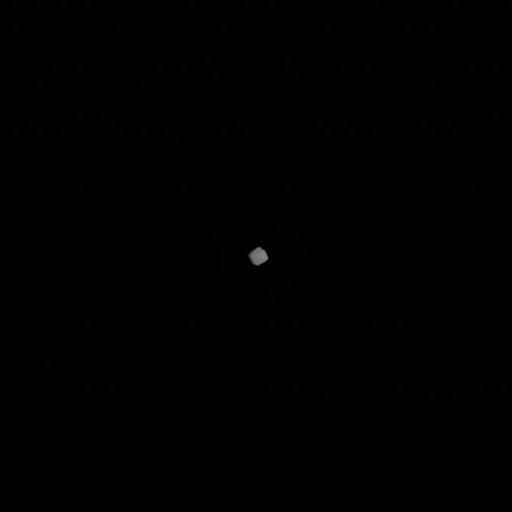Emily Lakdawalla • Sep 13, 2018
Hayabusa2 stops short of close approach on first touchdown rehearsal
This is why people do rehearsals. Hayabusa2 didn’t quite make it down to its intended 60-meter distance from asteroid Ryugu yesterday. The “touchdown 1 rehearsal 1” operation aborted at an altitude of about 600 meters after the laser altimeter had trouble detecting reflections from Ryugu’s very dark surface. There is nothing wrong with the spacecraft; it’s healthy and returning to its home position of 20 kilometers altitude. The team will adjust parameters and give it another try in the future. In the meantime, they grabbed some cool photos from distances under 1000 meters. The last several optical navigation photos, shared on the Web in real time, actually showed the shadow of Hayabusa2 on the surface of the asteroid.


Something to keep in mind about these wide-angle optical navigation camera pictures: The asteroid is about 900 meters in diameter. The final photo was taken from 635 meters away. So the spacecraft was closer to the asteroid than the asteroid is large. That will make the view of the surface distorted, with the equatorial bits bulging toward us. The distortion combined with the near-zero phase angle makes the asteroid look weirdly flat. You can’t see the terminator (day-night boundary) anywhere; everything is super sunlit and there’s little shape from shading.
For that reason, I like this newly shared image much better as a portrait of Ryugu. It was taken using the telescopic optical navigation camera, not the wide-angle camera, from a distance of 22 kilometers. The ONC-T has a field of view that is 10 times narrower than the ONC-W (6.5 degrees wide as opposed to 65 degrees wide). The view is much less distorted, and looks more like an object floating in space.

I found this image in a PDF presentation evidently shared at a September 5 press briefing; I haven’t found this PDF elsewhere yet. The presentation also details the “Box B” operation that Hayabusa2 conducted from 18 August to 17 September, taking excursions to different longitudes and latitudes to survey the asteroid. The “+y” excursion got them fairly far south, producing the different angle on the gigantic south polar boulder.

Details of the first touchdown rehearsal
The mission posted a schedule here before the descent operation began. Descent from home position began at 06:25 on 11 September. This, and all other times in this update, are UTC. One thing I am unsure about is whether the reported times are spacecraft event time or Earth received time; one-way light time was about 17.4 minutes.
Updates on Twitter indicated that they’d reached 12 kilometers at 11:50 and 10 kilometers at 13:20. The spacecraft paused as planned below 5 kilometers (a position they refer to as “Gate2”) in order to await approval from the mission controllers to proceed. The team gave approval at 15:32. The spacecraft had reached 2.5 kilometers at 22:50 and 1.5 kilometers at 01:40 on 12 September.
Unfortunately, the operation halted shortly after that. The Hayabusa2 twitter reported: “Hayabusa2 is now rising after stopping its descent. Spacecraft status is normal. At an altitude of about 600m, descent was autonomously stopped, likely due to the distance measurement by the laser altimeter (LIDAR) becoming impossible due to the low reflectance of Ryugu.” And: “The spacecraft is now returning to the home position (about 20km from the centre of Ryugu). From tomorrow, we will revise the descent procedure, including reviewing the LIDAR settings.”
The original plan had Hayabusa2 attempting deployment of the first pair of MINERVA-II microrovers on 20 to 21 September. The mission hasn’t stated yet whether they’re going to proceed for that attempt as planned, or if they will now need to do another touchdown rehearsal. Stay tuned to the Hayabusa2 website and Twitter feed for news!

Support our core enterprises
Your support powers our mission to explore worlds, find life, and defend Earth. You make all the difference when you make a gift. Give today!
Donate

 Explore Worlds
Explore Worlds Find Life
Find Life Defend Earth
Defend Earth

